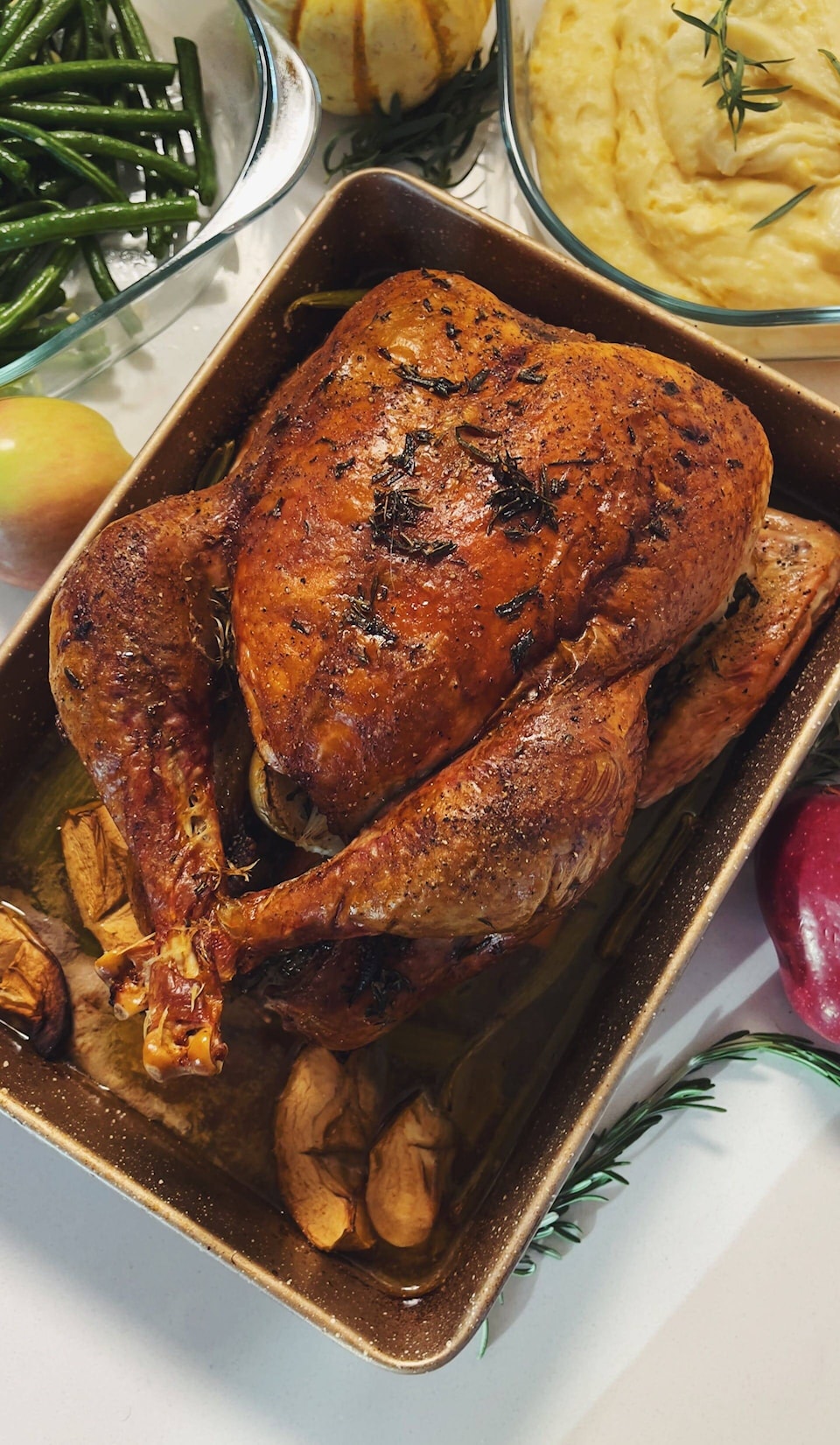Most holiday festivities include preparing and eating food. Addressing uninvited guests (pathogens) that lurk in the background is crucial amid the joy and celebration.
As food safety researchers, we study how to protect people from infections caused by foodborne pathogens. While you likely know to wash your hands and keep your raw meats separate from other foods, thereSA����Ӱ�Ӵ�ý�s another essential thing to do to avoid spending your holiday in the bathroom: probe your food.
Each year, four million Canadians get sick from the food they eat. The most common cause is norovirus, which causes the most illnesses. Other leading causes include the bacteria Listeria, Salmonella, Campylobacter and Shiga toxin-producing E. coli.
The impact is far-reaching, from mild cases causing discomfort to severe instances requiring hospitalization. Each year, these infections cause millions of missed workdays, resulting in productivity losses and costs of about $400 million.
The World Health Organization is currently determining how much foodborne illness occurs globally each year, including the long-term complications that can occur, like kidney disease and Guillain Barre syndrome.
Ensuring food is cooked correctly
Many people may not know that a food thermometer is the only way to know your food is cooked correctly. A food thermometer is your holiday feastSA����Ӱ�Ӵ�ý�s unsung hero, ensuring that poultry, meats and other dishes SA����Ӱ�Ӵ�ý� including those that are vegetable-based SA����Ӱ�Ӵ�ý� reach the internal temperatures needed to eliminate harmful pathogens.
Proper food thermometer use not only safeguards against illness but also enhances the overall culinary experience by guaranteeing that your dishes are cooked to perfection.
But when should you use a thermometer, and how? You should use your food thermometer any time you cook meat or other foods high in protein (like quiche, stir fry and plant-based SA����Ӱ�Ӵ�ý�meatsSA����Ӱ�Ӵ�ý�), and whenever you reheat leftovers.
Different foods have different target temperatures, so use a reliable food safety chart to determine the appropriate temperature for each dish. If you are pressed for time, the safest temperature for most foods (except whole birds) is 74 C (165 F). Health Canada recommends 82 C (180 F) for whole birds like turkey and chicken.
You can even update your old recipes and cookbooks by changing SA����Ӱ�Ӵ�ý�cook until the juices run clearSA����Ӱ�Ӵ�ý� (or other instructions that are not very useful!) to SA����Ӱ�Ӵ�ý�cook until it reaches 74 (or 82) degrees Celsius.SA����Ӱ�Ӵ�ý�
Choosing and using a food thermometer
If youSA����Ӱ�Ӵ�ý�re among the one-third of Canadians who donSA����Ӱ�Ӵ�ý�t own a food thermometer, your first step is selecting the right one.
Choose a reliable digital food thermometer designed for the specific type of food youSA����Ӱ�Ӵ�ý�re preparing. There are various types, including instant-read thermometers for quick checks and oven-safe thermometers that you can leave in items while theySA����Ӱ�Ӵ�ý�re cooking in the oven.
To check the temperature, insert the thermometer into the thickest part of the food, avoiding bones and fatty areas. For poultry, the thermometer should be inserted into the innermost part of the thigh and wing and the thickest part of the breast.
Make sure to wait until the temperature readout stops changing, to allow the thermometer sufficient time to provide an accurate reading. Finally, make sure you wash the thermometer with warm soapy water after each use.
Cooked to perfection
Besides making sure food gets hot enough to kill harmful pathogens, thereSA����Ӱ�Ӵ�ý�s other good news about food thermometer use. Does your best friend overcook the roast beef to sawdust level? Do you have a family member who cooks the taste out of chicken in the name of safety? Using a food thermometer can help ensure a moist and delicious meal, bringing friends and family together.
As food safety researchers, our goal is to make sure that SA����Ӱ�Ӵ�ý�all CanadiansSA����Ӱ�Ӵ�ý�know how to use a food thermometer, and that it becomesSA����Ӱ�Ӵ�ý�as much a part of their life as a toothbrush.SA����Ӱ�Ӵ�ý� On that note, food thermometers make great gifts!
Handling leftovers
In addition to using a food thermometer to check that your leftovers are reheated to 74 C before you eat them, there are other important tips for safely handling leftovers this holiday season.
Refrigerate them promptly in ways that allow them to cool quickly, such as in shallow containers, loosely covered until they are chilled. Either consume them in the next two to three days, or freeze them right away for later use.
Many people prepare unique dishes for the holidays, travel with food and prepared dishes, and host or attend holiday buffets and potlucks. Health Canada has specific tips for ensuring your buffets, baked goods, ciders, eggnog, stuffing and more are safe to eat.
Finally, if you do happen to get sick this holiday season with nausea, vomiting, diarrhea or other digestive troubles, make sure you seek health care as needed. From a food safety perspective, the best option, if you can, is to stay out of the kitchen while you are ill and donSA����Ӱ�Ӵ�ý�t prepare food for others.
SA����Ӱ�Ӵ�ý�By Shannon Majowicz, associate professor, public health and health systems, University of Waterloo, and Ken Diplock, professor and program co-ordinator of the bachelor of environmental public health program at Conestoga College and a member of the Canadian Institute of Public Health Inspectors. This article is republished from The Conversation under a creative commons licence.



